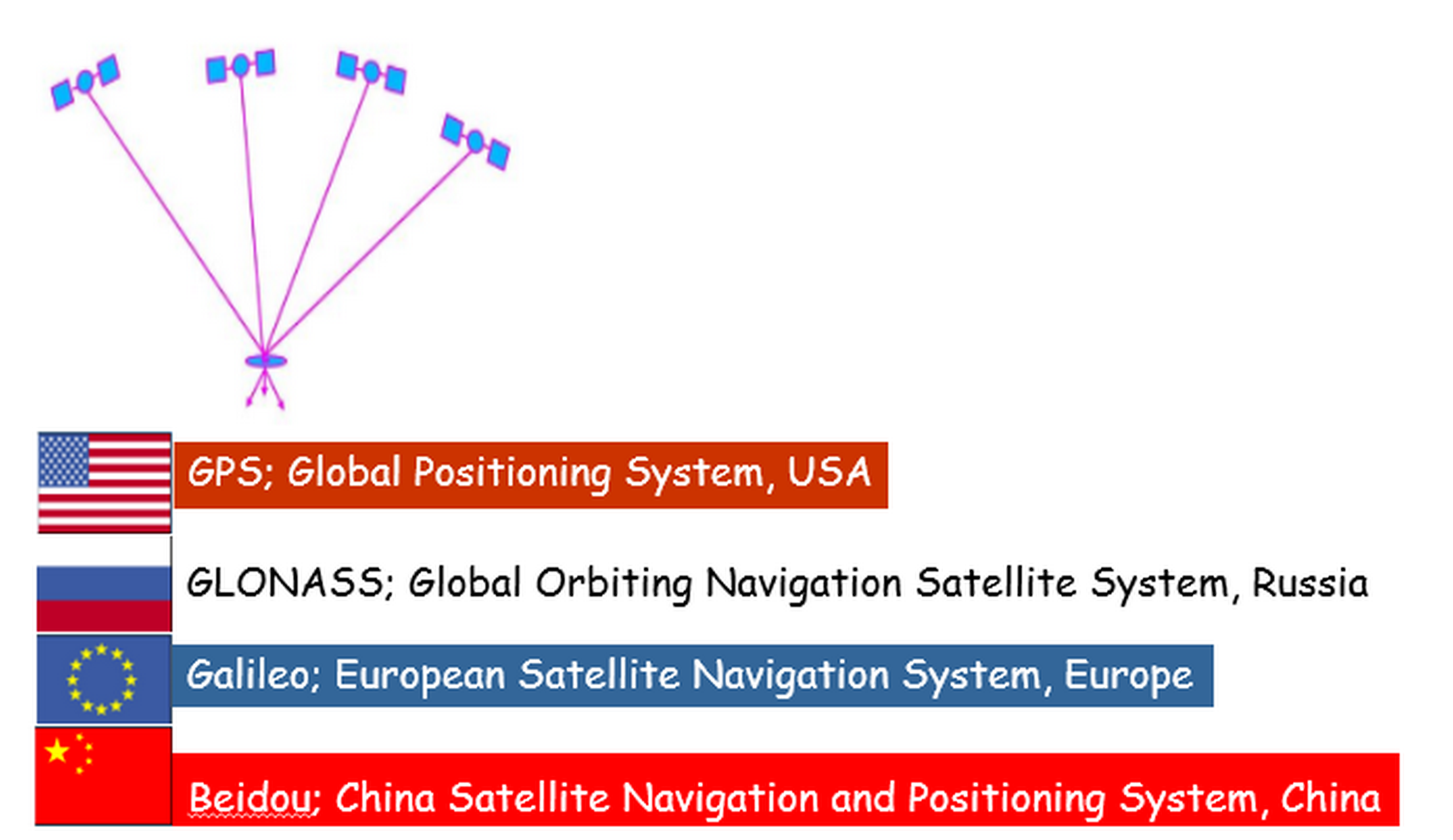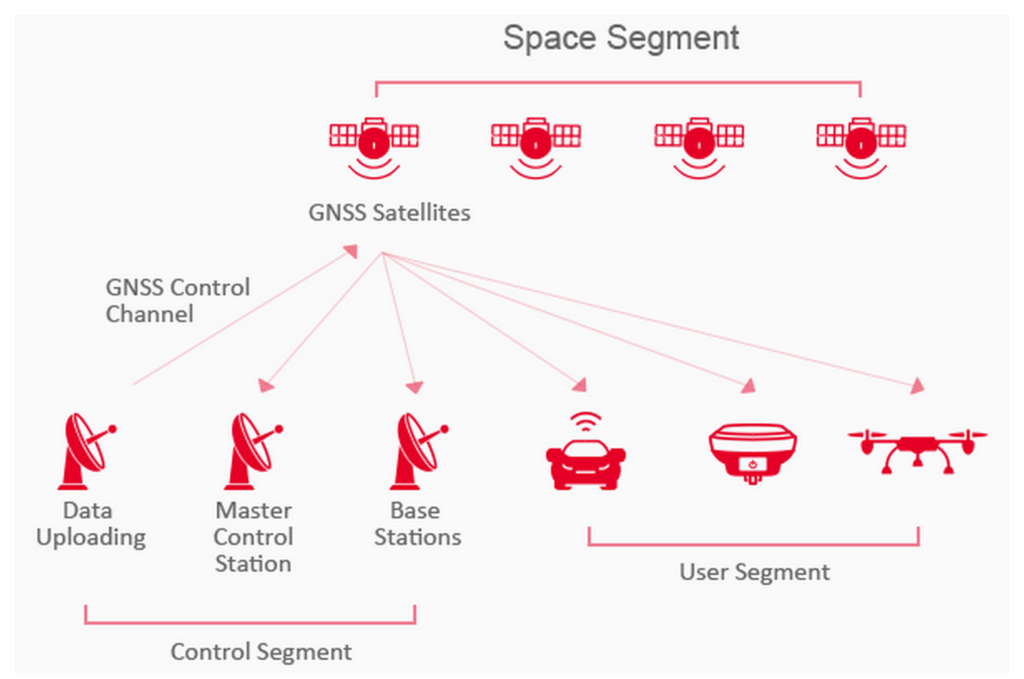Global Navigation Satellite System (GNSS) refers to a constellation of satellites orbiting the earth broadcasting radio navigation signals from space that carries positioning and timing data to GNSS receivers. The GNSS receivers then use this data to determine its location. GNSS provides global coverage.

GNSS is composed of space, control and user components. Spaces components refers to the satellite constellations and their motions in space. Control components refers to how whole systems is managed and owners. GNSS is owned and managed by different countries and regional organizations including GPS by USA, GLONASS by Russia, Galileo by Europe union and BeiDou by China.

User components refers to the GNSS receivers tracking one or all GNSS signal providing navigational and precise positioning and timing solutions. Many manufacturers are available providing all types of GNSS receivers. The GNSS signals are integrated in the GNSS receivers to reduce monopoly, increase accuracy, ensure availability and provide integrity and continuity.
The accuracies of GNSS receivers(standalone) range from 3 to 15m and can be improved to submeter by single point postposing techniques and even to centimeter levels using PPP real time post processing techniques within the GNSS receivers.


